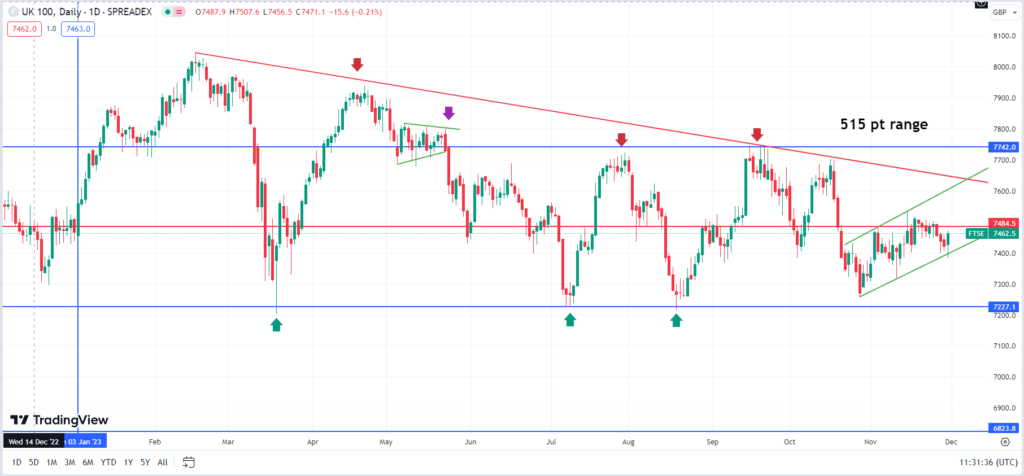FTSE100: Weathering Tech Shortfalls in a Global Upsurge
04-12-2023
In recent years, the UK’s FTSE100 index has faced headwinds, with investors expressing concerns over a perceived shortage of big technology stocks. This sentiment reached its climax during the summer when ARM, a high-profile player in the tech sector, chose to go public on the New York Stock Exchange (NYSE) instead of its native London Stock Exchange – underscoring the challenges faced by the domestic marketplace in attracting and retaining major technology companies.
Month on month, we have seen the NIKKEI 225 index surging by 6%, the S&P500 by 8%, both the NASDAQ and the DAX up by 10% – with the FTSE100 reporting only a modest 1.37% uptick, standing in stark contrast to the impressive gains seen across the other major indices.
This divergence has raised questions about the FTSE100’s ability to compete in the global market, particularly as technology plays an increasingly vital role in shaping the future of economies. Government initiatives to boost liquidity in domestic markets are a step in the right direction, but sustained efforts are required to bridge the valuation gap and attract technology giants to list in the United Kingdom.
On 29/11/2023 Tim Levene, the boss of leading London listed fintech fund Augmentum, was quoted in CityAM stating.
“A lack of liquidity had weighed on valuations in the capital and faster reform was needed to correct the slide in UK PLC.”
“[On the] London market it has been Black Friday, all year. In the investment trust sector, it’s 50 per cent off every day of this year,” he told City A.M.
His views that the UK is undervalued relative to other developed markets are shared almost universally amongst his big city peers, seeing the current environment as a historic opportunity with many companies offering incredibly good value for money.
This optimism is supported by key economic indicators; steadily falling inflation, an end to aggressive interest rate hikes and improving consumer confidence. Historical trends suggest that market rebounds can be strong and rapid, offering blockbuster rewards for patient investors, as demonstrated by London listed Rolls Royce’s 171.22% YTD boom.
If you agree with this sentiment, you may opt to position yourself to benefit from a FTSE rebound.

(Chart 1: YTD price action of the FTSE 100)
High = 8045
Low = 7202
After an early rally in Q1, we have witnessed a series of declining highs with the FTSE100 remaining rangebound from the ongoing selling pressure in the market.
A key 515-point 6-month range from 7227/7742 is represented on the chart by the parallel lines in blue, with a midpoint of 7484 denoted by the line in red.
The 7225 level has acted as an integral support for the FTSE as we can see by the lower blue line. It has bounced three times off this level, highlighting its importance.
The highest rebound from the 7225 level was to 7916, printed mid-April. Since then, the FTSE has failed to reclaim this level, with heavy selling pressure locking it into the large trading range since 24th of May, signalled by the purple arrow.
At present, following end-of-October’s lows, the FTSE has steadily ascended, having now surpassed the mid-point of this range, where it found short term resistance. However, as seen by the rising trendline in green, the market has found support printing a higher low of 7382 adding support to this current counter-trend move. Upper channel resistance can be seen at 7630, which coincides with down trend resistance. A break above would be seen as material change in the trend.
Long Call Spread
Trade Idea
Long Call Spread
A long Call Spread on 29/11/2023 would have dealt at the following prices.
Total consideration = £195.00
Breakeven @ 7819.5
Max profit of £805 if @ 7900 on expiry





